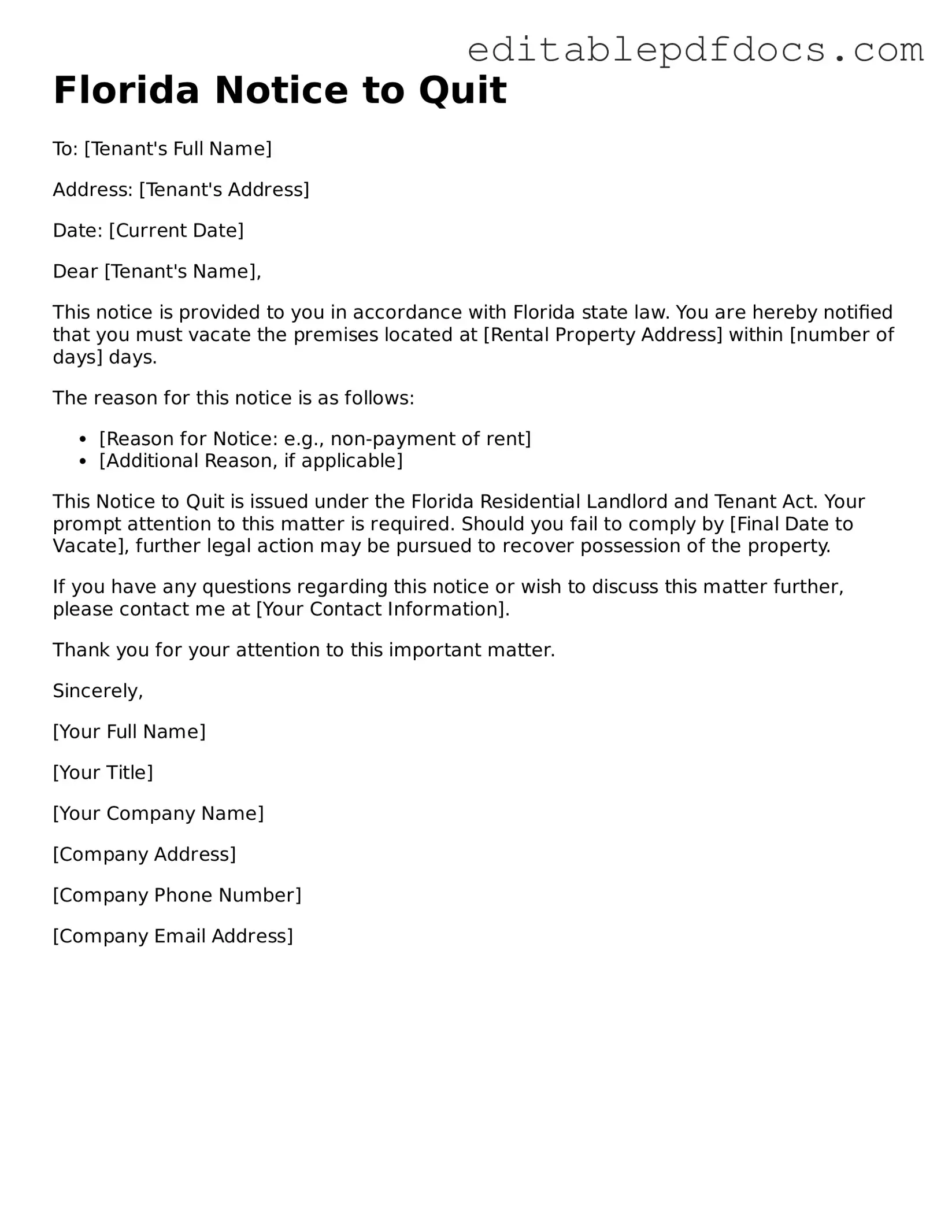Notice to Quit Document for Florida
The Florida Notice to Quit form is a legal document that landlords use to inform tenants of the need to vacate a rental property. This form serves as an essential step in the eviction process, ensuring that tenants are given proper notice before any legal action is taken. Understanding how to fill out this form accurately is crucial for both landlords and tenants; take action by filling out the form below.
Fill out the Florida Notice to Quit form by clicking the button below.
Open Editor Now
